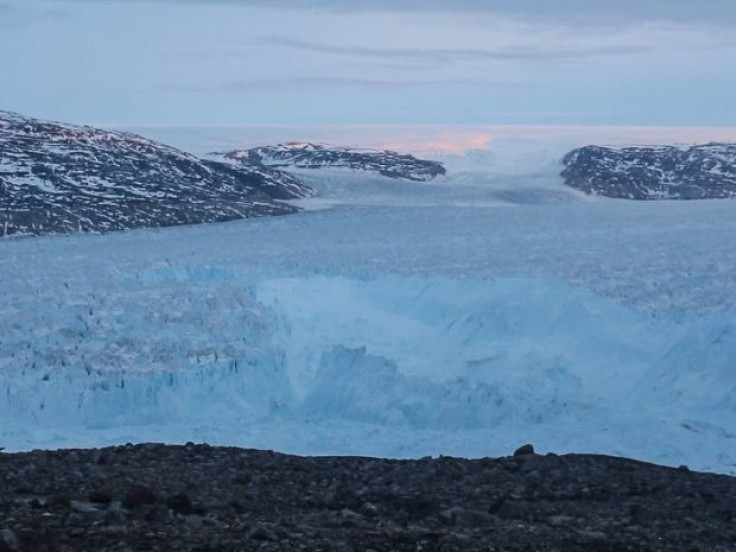Watch: Humongous 4-Mile Iceberg Breaking Away From Glacier In Greenland
The impact of climate change is difficult to comprehend, but a new video from New York University shows a humongous iceberg breaking away from a glacier in eastern Greenland, providing a real-world depiction of how rising temperatures are contributing to the global increase in sea level.
On June 22, 2018, the 4 mile-wide block of ice started drifting away from the Helheim glacier. It was nearly as big as the region covering lower Manhattan to Midtown in New York City and took just half an hour to separate itself from the glacier.
The entire event, popularly known as calving, was recorded and compressed into a 90-second long time-lapse video.

As the researchers who recorded the clip described, the berg in question detached from the glacier and moved away, which resulted in thin and tall icebergs called pinnacle bergs calving off and flipping over. Its motion further down the road led to a collision with another flat berg. The clip even shows elevating sea level as the massive block of ice detaches from the glacier and enters into the ocean.
All of this movement as well as interaction, according to the researchers, could prove critical in developing simulations related to how the breaking of icebergs contributes to sea-level increase.
“Global sea-level rise is both undeniable and consequential,” David Holland, who led the NYU research team, said in a statement. “By capturing how it unfolds, we can see, first-hand, its breath-taking significance.”
Around 15,000-30,000 icebergs break off every year and the team is eager to study as many as possible to understand different styles of iceberg formation and improve the models designed to anticipate how climate change affects calving and then how calving affects sea-levels.
“Knowing how and in what ways icebergs calve is important for simulations because they ultimately determine global sea-level rise,” Holland, who filmed the calving event, added in the statement. “The better we understand what’s going on means we can create more accurate simulations to help predict and plan for climate change.”
As per last year’s estimates, if the entire Western Antarctic Ice Sheet collapses, the sea level would increase by as much as 10 feet, which would be more than enough to threaten coastal regions around the globe, including New York City. Also, nearly 40% of the US population live in coastal regions.
© Copyright IBTimes 2024. All rights reserved.











